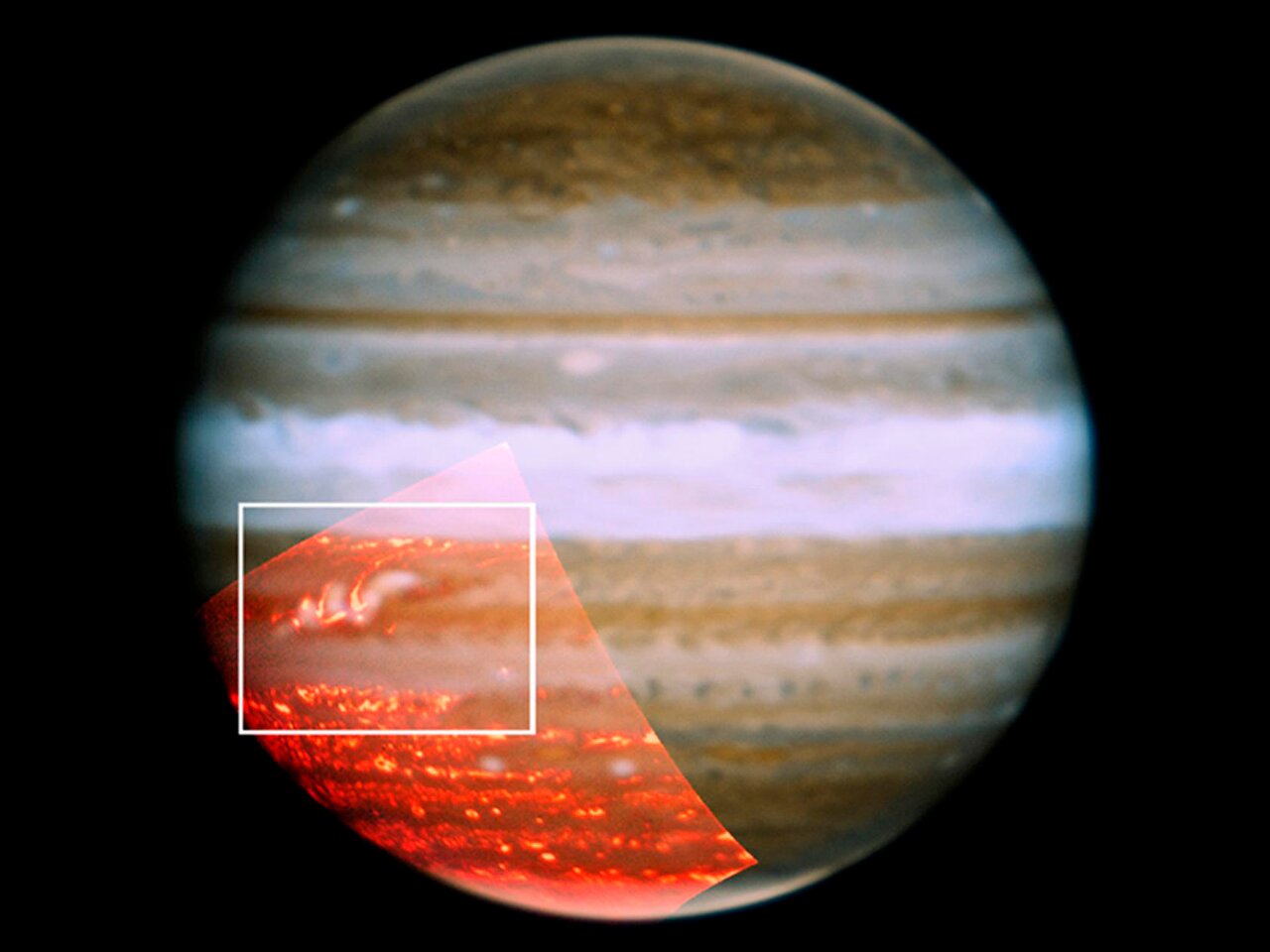Jupiter Shows First Signs of its Returning Belt
November 24, 2010

This image is a composite of three color images taken on Nov. 18, 2010, by the Gemini North telescope in Hawaii. The composite image shows a belt that had previously vanished in Jupiter's atmosphere is now reappearing.
The three images used to make the composite were taken at three different parts of the infrared spectrum – 2.12 microns (blue), 1.69 microns (yellow) and 4.68 microns (red). At 1.69 microns, scientists see sunlight reflected from Jupiter's main cloud deck – the same clouds they see in visible light. The emission at 2.12 microns is produced by sunlight reflected from higher-altitude particles well above the main deck. At 4.68 microns thermal emission can be seen arising from the tops of Jupiter's clouds, with the hottest emission coming from the deepest atmosphere and signifying regions with minimal overlying cloud cover.
The region just to the left of the center, inside the white box (enlarged in the lower panel) shows the region of the South Equatorial Belt with an unusually bright spot, or outbreak. One thing scientists were looking for in the infrared was evidence that the darker material emerging to the west of the bright spot was the start of the clearing of the cloud deck. The particles lofted by the initial outbreak are easily identified in yellow as high-altitude particles at the upper right, with a second outbreak to the lower left. In the coming weeks, further outbreaks are expected to take place to the west (left) of those seen in this image, and the clear atmospheric regions will begin to fill this latitude band at the same time as the dark brown color typical of this region returns.
More Information
Glenn Orton of Jet Propulsion Laboratory leads the international team that is conducting this research.
Links
- This result is featured in a press release from the Jet Propulsion Laboratory.
Contacts
Peter Michaud
pmichaud@gemini.edu
1 (808) 974-2510
1(808) 936-6643
Gemini Observatory
Hilo, HI 96720
Jia-Rui Cook
Jia-Rui.C.Cook@jpl.nasa.gov
Phone: (818) 354-0850
Jet Propulsion Laboratory

